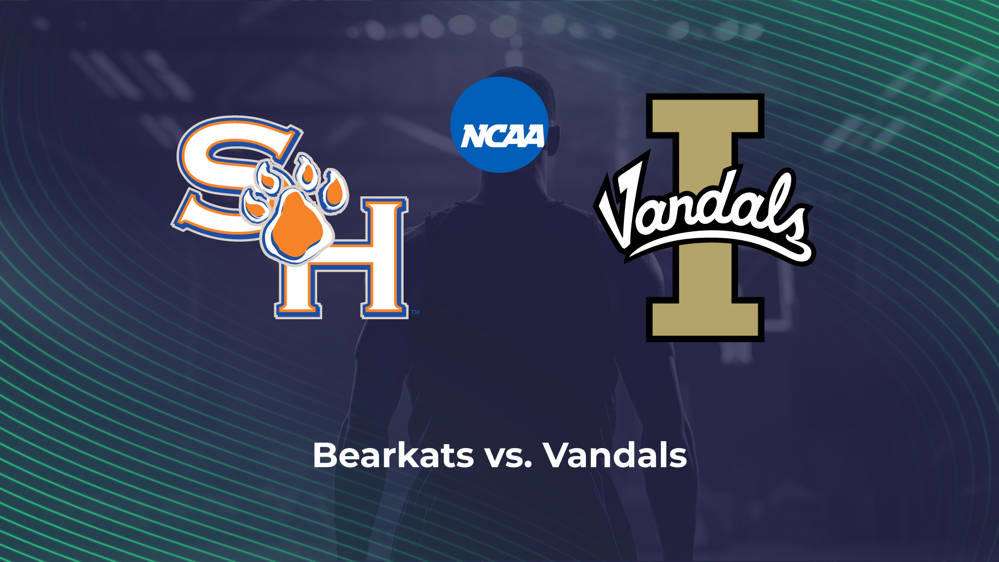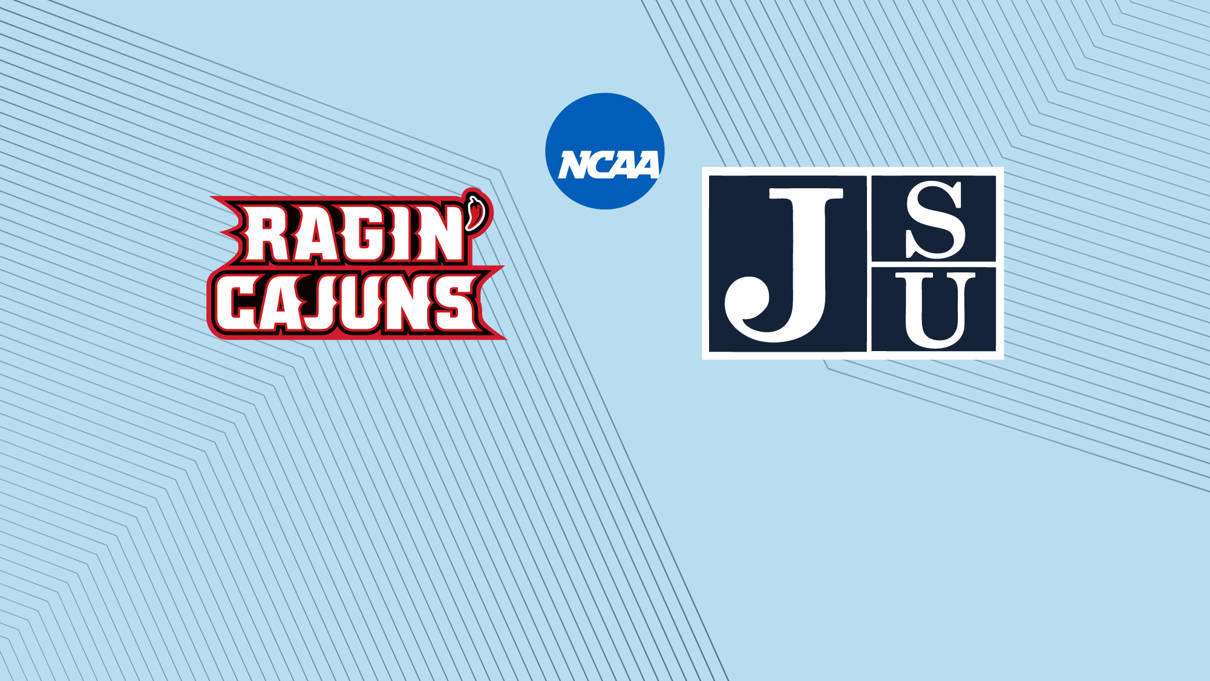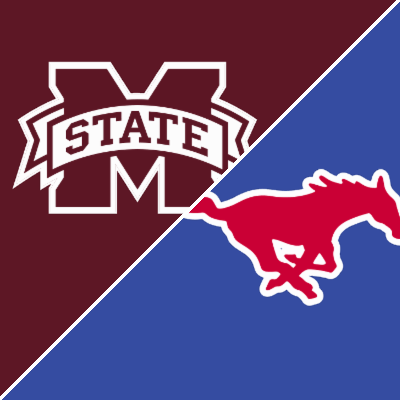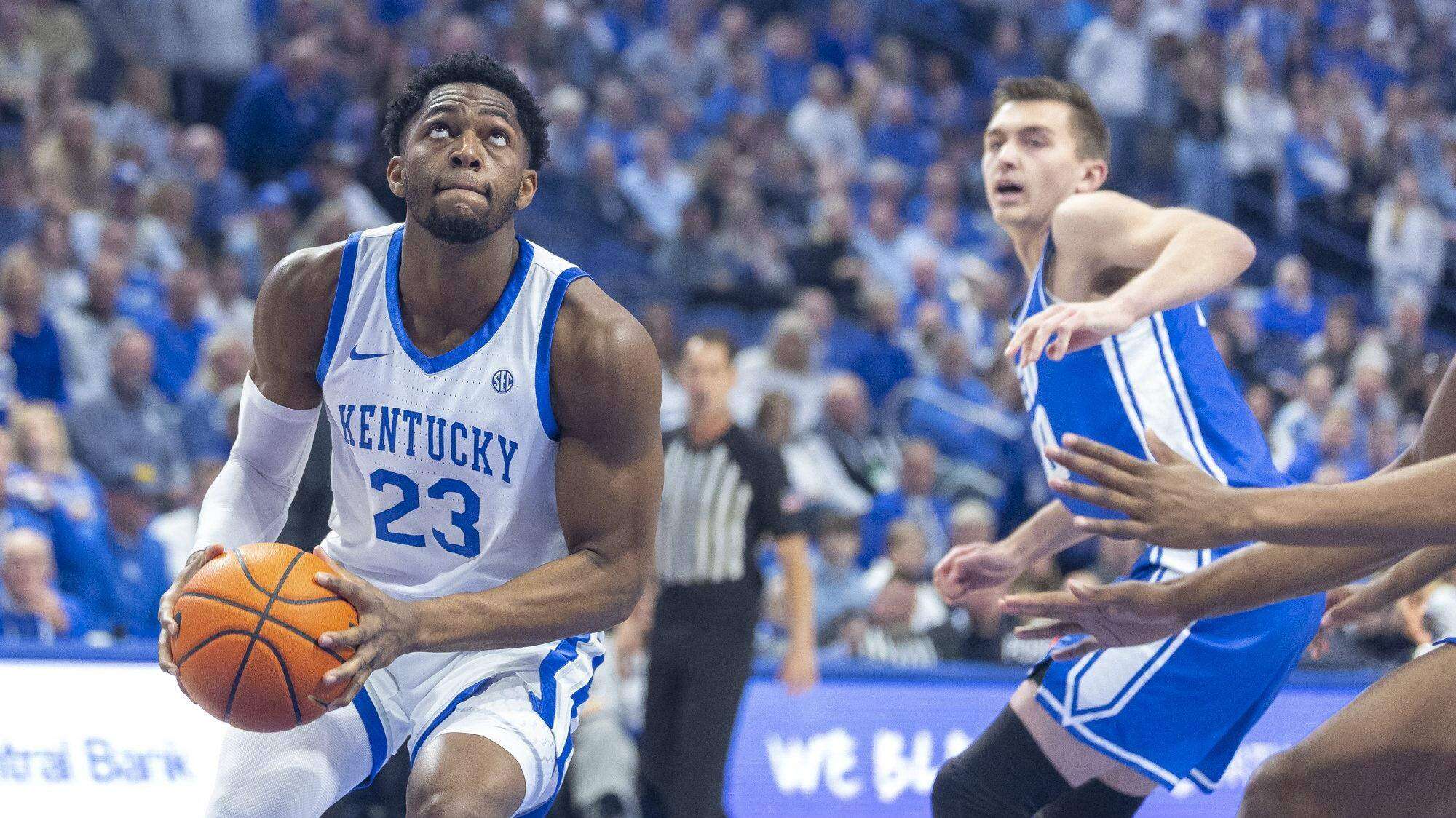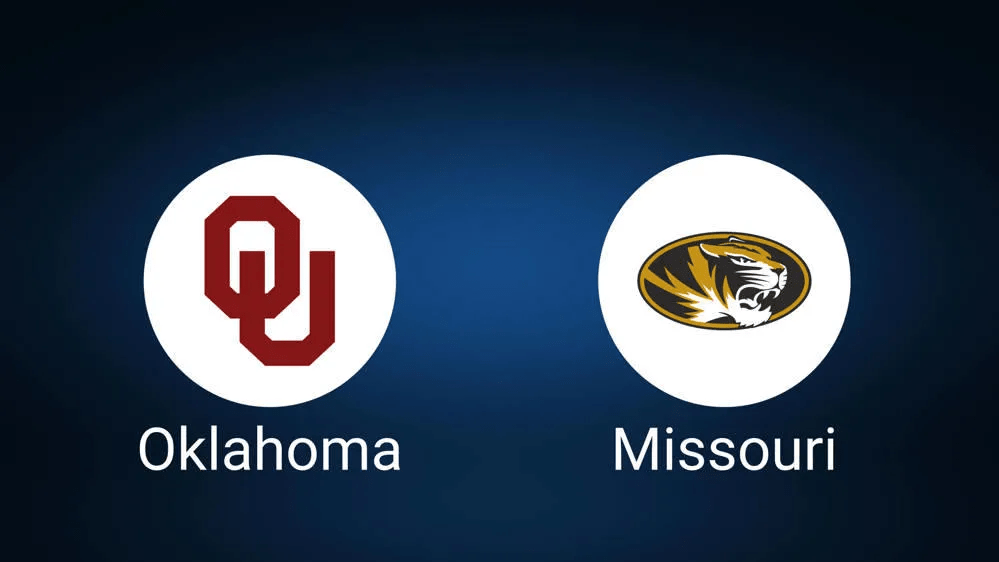Stony Brook Seawolves vs. Loyola Marymount Lions Advanced Game Analysis
Stony Brook Seawolves vs Loyola Marymount Lions Advanced Game Analysis – NCAA Basketball Nov.28, 2025 at 10:00pm ET Matchup

Stony Brook Seawolves vs Loyola Marymount Lions Advanced Game Analysis – NCAA Basketball Nov.28, 2025 at 10:00pm ET
Matchup Preview Table
| Team | Record | Points / Game | Opp Points / Game | Avg Score Margin | Eff FG% | 3P% | FT% | Assists / Game | A / T Ratio | Total Rebounds / Game | Turnovers / Game |
|---|---|---|---|---|---|---|---|---|---|---|---|
| Stony Brook Seawolves | 5 2 | 69.8 (#257) | 71.2 (#112) | 1.4 (#183) | 50.2% (#195) | 33.6% (#166) | 69.7% (#228) | 12.2 (#238) | 1.109 (#171) | 31.8 (#296) | 11.0 (#92) |
| Loyola Marymount Lions | 7 1 | 74.6 (#187) | 66.1 (#40) | +8.4 (#104) | 54.4% (#92) | 38.9% (#31) | 60.2% (#360) | 14.0 (#151) | 1.101 (#175) | 37.0 (#133) | 12.7 (#197) |
Quick Glance Summary Card
Game Snapshot
===========================================
Form and Margin
- Stony Brook: 5 2, 69.8 PPG (#257), 1.4 margin (#183)
- Loyola Marymount: 7 1, 74.6 PPG (#187), +8.4 margin (#104)
Offensive Level
Stony Brook █████░░░░░░ 69.8 PPG, 50.2% eFG
Loyola Marymount ██████░░░░░ 74.6 PPG, 54.4% eFG
Defensive Scoring
Stony Brook ██████░░░░░ 71.2 Opp PPG (#112)
Loyola Marymount █████████░░ 66.1 Opp PPG (#40)
Rebounding
Stony Brook ████░░░░░░░ 31.8 RPG (#296)
Loyola Marymount ███████░░░░ 37.0 RPG (#133)
Creation and Turnovers
Stony Brook 12.2 AST (#238), 1.109 A/T (#171),
11.0 TO (#92)
Loyola Marymount 14.0 AST (#151), 1.101 A/T (#175),
12.7 TO (#197)
Headline:
Loyola Marymount brings the better margin, stronger shooting
and a top 40 scoring defense into a matchup with a Stony Brook
team that defends the arc poorly but turns it over less and
takes care of the ball decently well.
Team Identity Profiles
Stony Brook Seawolves Team Profile
Stony Brook arrives at 5 2 with numbers that look more like a grind than a surge. The Seawolves score 69.8 points per game (#257) while allowing 71.2 (#112), leaving them with a negative 1.4 average scoring margin (#183) despite a winning record. Offensively they sit at 50.2 percent effective field goal percentage (#195) and 42.7 percent overall from the field (#234), paired with a 1.089 shooting efficiency index (#178). Those figures are slightly below the national middle, and the raw scoring output reflects a team that has to work for every basket rather than overpower opponents.
Creation and ball security are serviceable. Stony Brook posts 12.2 assists per game (#238) on a 0.500 assists per field goal made ratio (#223). Their assist to turnover ratio is 1.109 (#171) with only 11.0 turnovers per game (#92) and a 14.7 percent turnover per play rate (#142). That turnover figure is a key stabilizer. Even when the shot quality is average, they generally get attempts up instead of wasting possessions. The offense may not be explosive, but it avoids self inflicted damage.
The shooting profile is balanced between inside and outside. The Seawolves hit 33.6 percent from three (#166) on 25.6 attempts per game (#110), making 8.6 threes (#115). Those numbers describe a respectable perimeter attack, capable of stretching defenses without being entirely three point dependent. Inside the arc they shoot 50.0 percent on twos (#224), which is steady but not a real separator. At the line, they generate a 0.311 free throw attempt rate (#275), 17.8 attempts per game (#299) and 12.4 makes (#292) at 69.7 percent (#228). Free throws are not a core weapon; Stony Brook does not get to the stripe often and does not convert at an especially high rate.
Defensively the picture is mixed. Stony Brook allows 51.7 percent effective field goal percentage (#189) and 45.8 percent overall shooting (#214). Opponents shoot 39.7 percent from three (#339), one of the worst defensive marks in the country, but only 48.4 percent on twos (#102). That split suggests that the Seawolves protect the paint reasonably well but struggle to contest perimeter shots consistently, whether through late rotations, close out discipline or scheme. Opponent shooting efficiency sits at 1.091 (#169), which is not disastrous but is impacted heavily by the three point leakage.
On the glass, Stony Brook is underpowered. They average 31.8 rebounds per game (#296), with 7.4 offensive boards (#302) and 20.6 defensive boards (#272). Their offensive rebounding rate is 23.3 percent (#302), while their defensive rebound rate is 68.7 percent (#237). Opponents grab 36.0 boards per game (#188), including 9.4 offensive rebounds (#201) and 24.4 defensive rebounds (#254), with a 31.3 percent offensive rebound rate (#237) and a 76.7 percent defensive rebound rate (#302). The Seawolves are giving up size and physicality on both ends, and they rarely steal extra possessions on the glass.
In terms of disruption, Stony Brook is modest. They collect 6.2 steals per game (#244) with an 8.0 percent steals per play rate (#202) and force 11.8 opponent turnovers per game (#218) at 15.3 percent opponent turnovers per play (#180). They are more about positional defense than outright havoc. Foul wise they commit 16.8 personal fouls per game (#80) and 21.8 percent fouls per play (#136), while opponents commit 16.6 fouls per game (#296). The whistle profile is fairly neutral. The more concerning number is the 0.454 opponent free throw attempt rate (#310) and 23.8 opponent attempts per game (#248), which shows that even with moderate foul counts, they give away efficient scoring chances because many fouls occur in shooting situations.
Loyola Marymount Lions Team Profile
Loyola Marymount enters at 7 1 with a much more robust statistical resume. The Lions average 74.6 points per game (#187) while allowing only 66.1 (#40), resulting in a strong plus 8.4 scoring margin (#104). Offensively, they post 54.4 percent effective field goal percentage (#92) and 45.9 percent overall shooting (#127), with a 1.108 shooting efficiency index (#145). Those numbers indicate a clearly above average offense that scores efficiently without needing extreme pace or volume.
Creation is solid. Loyola Marymount records 14.0 assists per game (#151) on a 0.519 assists per field goal made ratio (#184), with a 1.101 assist to turnover ratio (#175). Turnovers sit at 12.7 per game (#197) with a 15.9 percent turnover per play rate (#214). These are steady figures. The Lions move the ball enough to create quality looks and avoid extended bouts of sloppy play, though they are not in the elite tier of passing teams.
The shooting profile is a clear strength. Loyola Marymount shoots 38.9 percent from three (#31) on 25.7 attempts per game (#107), making 10.0 threes per game (#45). That combination of accuracy and volume makes the perimeter game a major offensive pillar. Inside the arc, they hit 51.3 percent on twos (#199), slightly above average. Overall shooting is 45.9 percent (#127), and their shooting efficiency at 1.108 (#145) confirms that the offense generates and converts high value attempts. Free throws are the one glaring weakness. The Lions carry a 0.299 free throw attempt rate (#302) with 17.6 attempts per game (#303) and 10.6 makes (#338) at only 60.2 percent (#360). They do not get to the line often and leave many points there when they do.
Defensively, Loyola Marymount is a strong unit. They hold opponents to 66.1 points per game (#40), 45.2 percent effective field goal percentage (#38) and 39.2 percent overall shooting (#44). Opponent three point percentage is held at 31.8 (#135), while opponent two point percentage is a very impressive 43.7 percent (#22). Opponent shooting efficiency sits at 0.989 (#45), placing Loyola Marymount in the upper tier of defenses at limiting shot quality and conversion. They are not over reliant on steals or blocks to achieve this either. The shape is more about positional defense, contesting shots and forcing tough finishes.
On the boards, the Lions are credible. They average 37.0 rebounds per game (#133), with 9.6 offensive rebounds (#161) and 24.1 defensive boards (#111). Their offensive rebounding rate is 28.4 percent (#183) and defensive rebounding rate is 72.2 percent (#162). Opponents collect 35.6 boards per game (#172) with 9.3 offensive rebounds (#191) and 24.1 defensive boards (#245). Rebounding for Loyola Marymount is slightly above average, not overwhelming but strong enough to avoid structural issues.
Disruption metrics are moderate. Loyola Marymount posts 6.6 steals per game (#213) with an 8.2 percent steals per play rate (#187) and forces 12.9 opponent turnovers per game (#149) at 16.1 percent opponent turnovers per play (#132). They blend on ball pressure with sound positional principles, but they are not a pure havoc team. Foul wise, they commit 17.1 personal fouls per game (#91) and 21.5 percent fouls per play (#121), while opponents commit 17.7 fouls per game (#228). Opponent free throw attempt rate sits at 0.314 (#89) with 18.3 attempts per game (#75). This profile shows a defense that is physical enough to contest but still largely avoids sending opponents to the line at a problematic rate.
Team Identity Snapshot Lists
Stony Brook Identity Snapshot
- 5 2 record with 69.8 PPG (#257) and 71.2 opponent PPG (#112), negative 1.4 margin (#183)
- 50.2 percent effective field goal (#195), 42.7 percent overall FG (#234), 1.089 shooting efficiency (#178)
- 33.6 percent from three (#166) on 25.6 attempts (#110), 8.6 makes (#115)
- Limited free throw output at 69.7 percent FT (#228), 17.8 FTA (#299), 12.4 FTM (#292)
- Weak rebounding, 31.8 RPG (#296) with 23.3 percent offensive rebound rate (#302) and 68.7 percent defensive rebound rate (#237)
- Modest disruption, 6.2 steals (#244), 11.8 opponent turnovers (#218)
- Major defensive weakness on the perimeter, allowing 39.7 percent opponent threes (#339)
Loyola Marymount Identity Snapshot
- 7 1 record with 74.6 PPG (#187) and 66.1 opponent PPG (#40), plus 8.4 margin (#104)
- Efficient offense at 54.4 percent effective field goal (#92) and 45.9 percent FG (#127), 1.108 shooting efficiency (#145)
- High level perimeter attack, 38.9 percent from three (#31) on 25.7 attempts (#107), 10.0 makes (#45)
- Free throw shooting is a clear flaw, 60.2 percent FT (#360) with 17.6 FTA (#303) and 10.6 FTM (#338)
- Above average rebounding at 37.0 RPG (#133), 28.4 percent offensive rebound rate (#183) and 72.2 percent defensive rebound rate (#162)
- Strong overall defense, holding foes to 45.2 percent opponent effective field goal (#38) and 39.2 percent opponent FG (#44)
- Balanced disruption, moderate steals, moderate turnovers forced and limited opponent free throw volume
High Level Matchup Context
At the highest level, this game matches a team with a winning record but negative scoring margin against a team with both a strong record and a clearly positive margin. Stony Brook has found ways to win close games despite an underlying profile that suggests they are closer to average. Loyola Marymount has simply been better across more dimensions, with efficient shooting, quality defense and capable rebounding. The central analytical question is whether Stony Brook can neutralize Loyola Marymount’s three point advantage and keep the game in a narrow, low possession band where their turnover resistance and half court toughness can matter more.
If the game opens up and Loyola Marymount finds rhythm from deep, Stony Brook’s inability to both contest the arc and clean the glass could be exposed. Conversely, if the Seawolves can slow tempo, take care of the ball and leverage their perimeter shooting enough to keep pace, they can turn this into a possession by possession contest. The metrics lean toward Loyola Marymount as the more complete team, but there are still levers that Stony Brook can pull to compress the gap.
By The Numbers: Core Matchup Metrics
Scoring and Margin
Points Per Game Stony Brook █████░░░░░░ 69.8 (#257) Loyola Marymount ██████░░░░░ 74.6 (#187) Opponent Points Per Game Stony Brook ███████░░░░ 71.2 (#112) Loyola Marymount ██████████░ 66.1 (#40) Average Scoring Margin Stony Brook ████░░░░░░░ 1.4 (#183) Loyola Marymount ███████░░░░ +8.4 (#104)
Stony Brook scores less and allows more, which is exactly what the scoring margin shows. Loyola Marymount has been roughly a two or three possession better team over an average game simply based on scoring differential. That gap is meaningful, especially when it correlates with stronger shooting and defense rather than being purely schedule driven noise.
Shooting Efficiency
Effective Field Goal Percentage Stony Brook ██████░░░░░ 50.2% (#195) Loyola Marymount ███████░░░░ 54.4% (#92) Three Point Percentage Stony Brook ██████░░░░░ 33.6% (#166) Loyola Marymount █████████░░ 38.9% (#31) Two Point Percentage Stony Brook ██████░░░░░ 50.0% (#224) Loyola Marymount ██████░░░░░ 51.3% (#199) Shooting Efficiency Index Stony Brook 1.089 (#178) Loyola Marymount 1.108 (#145)
The shooting gap is clearest from behind the arc, where Loyola Marymount is one of the better three point shooting teams nationally by percentage while Stony Brook sits near the middle. Because both teams take a similar number of threes, the Lions advantage in conversion directly translates into real points on the scoreboard. Two point efficiency is close, but the overall effective field goal and efficiency indices show Loyola Marymount generating better shots across the full diet of attempts.
Rebounding
Total Rebounds Per Game Stony Brook ████░░░░░░░ 31.8 (#296) Loyola Marymount ███████░░░░ 37.0 (#133) Rebounding Gap vs Opponents Stony Brook 31.8 vs 36.0 (deficit of 4.2) Loyola Marymount 37.0 vs 35.6 (edge of 1.4) Offensive Rebounds and Rates Stony Brook 7.4 ORB (#302), 23.3% ORB% (#302) Loyola Marymount 9.6 ORB (#161), 28.4% ORB% (#183) Defensive Rebound Percentage Stony Brook 68.7% DRB% (#237) Loyola Marymount 72.2% DRB% (#162)
The glass tilts toward Loyola Marymount on both ends. Stony Brook is near the bottom nationally in offensive rebounding rate and is also underwater on the defensive glass. That means they rarely earn extra shots and often concede them. Loyola Marymount may not be elite on the boards, but they are solid enough to turn that deficit into a possession advantage, especially when combined with better shooting.
Ball Security and Pressure
Assists and Turnovers - Offense
Stony Brook 12.2 AST (#238)
11.0 TO (#92)
1.109 A/T (#171)
Loyola Marymount 14.0 AST (#151)
12.7 TO (#197)
1.101 A/T (#175)
Turnovers Forced - Defense
Stony Brook 11.8 Opp TO (#218)
15.3% Opp TO/play (#180)
6.2 steals (#244)
Loyola Marymount 12.9 Opp TO (#149)
16.1% Opp TO/play (#132)
6.6 steals (#213)
Ball handling is fairly even. Stony Brook turns it over less frequently than Loyola Marymount, but the Lions counter by forcing slightly more opponent turnovers. Assist levels favor Loyola Marymount, which makes sense in the context of their more efficient shooting and perimeter spacing. Neither team profiles as extremely turnover prone or extremely disruptive; instead, both sit around the middle, with Loyola Marymount posting a small net edge.
Fouls and Free Throws
Free Throw Rate (FTA per FGA)
Stony Brook 0.311 (#275), 17.8 FTA (#299), 12.4 FTM (#292)
Loyola Marymount 0.299 (#302), 17.6 FTA (#303), 10.6 FTM (#338)
Free Throw Percentage
Stony Brook 69.7% (#228)
Loyola Marymount 60.2% (#360)
Opponent Free Throw Profile
Stony Brook 0.454 Opp FTA/FGA (#310),
23.8 Opp FTA (#248)
Loyola Marymount 0.314 Opp FTA/FGA (#89),
18.3 Opp FTA (#75)
Both offenses draw a similar amount of contact but do not convert at a particularly high rate, especially Loyola Marymount, which sits at the bottom of the national FT% rankings. The Lions compensate with efficiency from the floor, while Stony Brook gains a modest relative edge at the line when both teams get to the stripe. Defensively, though, Loyola Marymount keeps opponents off the line far better than Stony Brook, which allows a high opponent free throw rate. In this particular matchup, free throws are unlikely to be a central strength for either side on offense, but if Loyola Marymount has a poor night at the stripe, it can keep Stony Brook within reach.
Advanced Metrics and Tempo Analysis
Field goal attempts and opponent attempts provide a lens on tempo. Stony Brook takes 57.2 shots per game (#240) and allows opponents 52.4 (#15). That profile points to a slightly slower pace than average, with the Seawolves willing to defend through multiple actions per possession. Loyola Marymount attempts 58.9 field goals (#186) while allowing 58.3 (#159). Their games sit closer to the national middle in pace, with enough possessions for their perimeter shooting edge to show up.
Effective field goal differentials and scoring margin also paint the efficiency picture. Loyola Marymount’s eFG% is 4.2 points higher than Stony Brook’s, while their opponent eFG% is 6.5 points lower. That 10.7 point swing in shooting efficiency is significant. Combined with a plus 8.4 margin versus minus 1.4, it suggests that the Lions are not only winning but doing so with sustainable shot quality and defensive resistance, not just outlier shooting runs.
Shot Profile and Matchup Fit
Stony Brook Offense - 33.6% from three (#166) on 25.6 attempts (#110), 8.6 makes (#115) - 50.0% on twos (#224) - 69.7% FT (#228) with 17.8 FTA (#299) - 50.2% effective field goal (#195) Loyola Marymount Defense - 31.8% opponent three point shooting (#135) - 43.7% opponent two point shooting (#22) - 45.2% opponent effective field goal (#38) - 0.314 opponent FTA/FGA (#89) Loyola Marymount Offense - 38.9% from three (#31) on 25.7 attempts (#107), 10.0 makes (#45) - 51.3% on twos (#199) - 60.2% FT (#360) with 17.6 FTA (#303) Stony Brook Defense - 39.7% opponent three point shooting (#339) - 48.4% opponent two point shooting (#102) - 51.7% opponent effective field goal (#189) - 0.454 opponent FTA/FGA (#310)
The shot profile matchup is stark. Loyola Marymount’s three point offense directly targets the biggest weakness in Stony Brook’s defense. The Lions high volume and high accuracy from deep face a defense that has struggled badly to guard the arc. Unless Stony Brook materially outperforms its season baseline in three point defense, Loyola Marymount is positioned to generate efficient perimeter scoring.
On the other end, Stony Brook’s offense runs into a defense that holds opponents below 32 percent from three and below 44 percent on twos. The Seawolves will have to rely on clean ball movement and timely shot making to reach or surpass their typical scoring output; there is nothing in the matchup profile that suggests easy baskets. The Lions may be vulnerable at the line due to poor free throw shooting of their own, but defensively they generally avoid letting opponents live there.
Offense vs Defense Matchup Breakdown
Stony Brook Offense vs Loyola Marymount Defense
Stony Brook will need precision and patience. Against a defense that is top 40 in opponent points per game and top 40 in opponent effective field goal percentage, the Seawolves cannot afford wasted possessions. Their 11.0 turnovers per game provide a decent starting point, but they will need to stretch Loyola Marymount with side to side action and use their 33.6 percent three point shooting to open driving lanes. The problem is that Stony Brook’s shooting is solid but not elite, and Loyola Marymount has held opponents to 31.8 percent from the arc.
Inside, Stony Brook’s 50.0 percent two point shooting meets a defense allowing only 43.7 percent. That disparity implies fewer clean looks in the paint and more contested finishes. The Seawolves also lack the offensive rebounding profile to earn many second chances, which means they must make the first look count more often than usual. With a free throw profile that is unspectacular and a defense that does not foul at a high rate, Stony Brook cannot rely on the stripe to rescue possessions.
Loyola Marymount Offense vs Stony Brook Defense
On this side of the ball, Loyola Marymount sees opportunity. Their 38.9 percent three point offense on 25.7 attempts per game faces a defense that is allowing 39.7 percent opponent three point shooting while conceding relatively few attempts. Stony Brook typically protects the paint better, but given Loyola Marymount’s perimeter efficiency, the Lions do not need heavy paint volume to be effective. Kickout threes off ball screens, drive and kick sequences and transition spotting will all be central.
Inside the arc, Loyola Marymount’s 51.3 percent two point shooting is likely to regress a bit against a defense allowing 48.4 percent, but not to an extreme degree. The real advantage lies in perimeter spacing that stretches the Seawolves rotations and eventually opens middle drives or short roll touches. The biggest concern for Loyola Marymount is at the free throw line. If they earn extra attempts through Stony Brook’s high opponent free throw rate but fail to convert at much higher than 60 percent, they could leave points that keep the game closer than the shot profile suggests.
Offensive Edge
Offensive Edge Meter Stony Brook █████░░░░░░ - 69.8 PPG (#257) - 50.2% eFG (#195) - 33.6% from three (#166) - 69.7% FT (#228) - 12.2 AST (#238), 1.109 A/T (#171) Loyola Marymount ████████░░░ - 74.6 PPG (#187) - 54.4% eFG (#92) - 38.9% from three (#31) - 60.2% FT (#360) - 14.0 AST (#151), 1.101 A/T (#175) Net Offensive Edge: Clear edge to Loyola Marymount through superior shooting efficiency and perimeter accuracy, with Stony Brook holding only a modest advantage at the line in percentage but not volume.
Defensive Edge
Defensive Edge Meter Stony Brook █████░░░░░░ - 71.2 Opp PPG (#112) - 51.7% Opp eFG (#189) - 39.7% Opp 3P (#339) - 48.4% Opp 2P (#102) - 0.454 Opp FTA/FGA (#310) Loyola Marymount █████████░░ - 66.1 Opp PPG (#40) - 45.2% Opp eFG (#38) - 31.8% Opp 3P (#135) - 43.7% Opp 2P (#22) - 0.314 Opp FTA/FGA (#89) Net Defensive Edge: Strong advantage to Loyola Marymount, anchored in shot suppression from both three and two and a much lower opponent free throw rate.
Style Matchup and Tempo Projection
Stylistically, the game leans toward a controlled tempo where Loyola Marymount can lean into shot quality and half court defense. Stony Brook is already comfortable playing games in the high 60s to low 70s, and Loyola Marymount’s defense is well suited to that environment. The Lions do not need a high possession game to let their shooting efficiency add up. Instead, they can steadily win small margins each segment.
For Stony Brook to tilt the style in their favor, they may need to push more selectively in transition than usual, especially after defensive stops. Easy baskets give them relief from Loyola Marymount’s set defense and prevent the Lions from fully dictating shot quality. At the same time, Stony Brook must control the ball well enough not to gift free points the other way. The more this game resembles a half court chess match, the more the metrics favor Loyola Marymount.
Key Players and Unit Impact
Stony Brook Seawolves
For Stony Brook, the perimeter rotation is critical. With 8.6 made threes per game at 33.6 percent, guards and wings must find ways to generate catch and shoot looks against a defense that contests the line well. They need efficient shot selection, limiting off balance attempts and leaning into drive and kick actions that create open feet set threes. Given Loyola Marymount’s paint protection numbers, pulling bigs away from the basket with pick and pop or five out spacing can be a useful wrinkle.
Ball handlers also carry responsibility for tempo and turnover control. The Seawolves 11.0 turnovers per game is a strength they must preserve in this matchup. Any spike in giveaways will be difficult to offset because they do not have the offensive rebounding or free throw dominance to reclaim lost possessions. Smart decision making against Loyola Marymount’s positional defense is essential.
In the frontcourt, Stony Brook’s bigs are tasked with competing on the glass against a stronger rebounding unit. While the numbers suggest they are at a disadvantage, even narrowing the rebounding gap and preventing easy putbacks can keep the game within striking distance. Offensively, bigs need to finish efficiently on the limited interior touches they get and facilitate handoffs and screens that free guards for perimeter looks.
Loyola Marymount Lions
Loyola Marymount’s identity is closely tied to its shooters. The guards and wings who produce 10.0 made threes per game at nearly 39 percent are the central pressure point on Stony Brook’s defense. Their ability to relocate, read help and punish late closeouts will determine a significant portion of the scoring margin. These players also help initiate offense with 14.0 assists per game, keeping the ball moving until high quality shots appear.
Secondary creators and combo forwards contribute by attacking closeouts and leveraging Stony Brook’s heavy orientation toward taking away the paint. When defenders overplay the perimeter to compensate for season long three point weaknesses, Loyola Marymount’s drivers can get downhill and either finish inside or collapse the defense for another kickout. Their reads in these situations will decide whether the Lions offense stays efficient if the first look is taken away.
In the frontcourt, the Lions bigs anchor both rebounding and interior defense. With 24.1 defensive boards per game and a 72.2 percent defensive rebound rate, they must continue to close possessions with one shot and out. On defense, rim protectors and positional bigs help hold opponents to 43.7 percent on twos. Against a Stony Brook team that prefers balanced shot distribution, that paint deterrence forces the Seawolves into a higher degree of difficulty on their drives and post touches.
Coaching Impact
Stony Brook’s staff faces a clear strategic problem: how to alter defensive coverage at the arc without sacrificing their relatively solid two point defense. The numbers strongly suggest that continuing to guard the three point line at their season baseline is not viable against Loyola Marymount’s shooting profile. The staff may respond with more aggressive closeouts, early stunts from the weak side or toggling between ball screen coverages to keep shooters out of rhythm. On offense they must design sets that generate clean perimeter looks despite Loyola Marymount’s strong shot contests.
Loyola Marymount’s staff has more flexibility. The core approach that has worked this season fits naturally against Stony Brook’s weaknesses. They can emphasize their perimeter game, maintain sound positional defense and trust their rebounding to do its job. The main thing they must manage is the free throw inefficiency that sits at 60.2 percent. Late game situations, lineup choices and inbound plays that minimize the need for key poor free throw shooters to handle the ball in crunch time are important details.
Timeout usage and game script adjustments will likely revolve around runs. If Loyola Marymount hits early threes and jumps ahead, the staff can shift toward a more conservative tempo while keeping pressure on the Seawolves offense. If Stony Brook hangs around by forcing misses and hitting timely shots, Loyola Marymount will need to adjust sets to get their best shooters comfortable looks instead of simply running base offense.
Risk Matrix and Scenario Tree
Scenario 1: Loyola Marymount Wins the Arc - Lions shoot near their 38.9% from three and reach or exceed 10 made threes. - Stony Brook continues to allow high percentage perimeter looks and cannot match the volume. - Rebounding stays roughly in line with season norms. - Likely Outcome: Loyola Marymount wins by high single digits or more. Scenario 2: Stony Brook Tightens Perimeter Defense - Seawolves hold Loyola Marymount well below their usual three point percentage, closer to the low 30s. - Stony Brook hits around or slightly above their own 33.6% from three. - Pace stays moderate with low turnover counts. - Likely Outcome: Game settles into a two or three possession contest, with Loyola Marymount still slightly favored but vulnerable. Scenario 3: Free Throw Variance and Late Game Close - Loyola Marymount’s 60.2% FT mark shows up in crunch time with missed front ends or split trips. - Stony Brook takes advantage with timely scoring and maybe a small edge at the line. - Likely Outcome: Narrow margin game where late possessions decide the outcome. Scenario 4: Rebounding Swing - Loyola Marymount generates more second chances than usual, and Stony Brook’s already weak rebounding gets overwhelmed. - Extra shots amplify Loyola Marymount’s efficiency advantage. - Likely Outcome: Comfortable Loyola Marymount win, with double digit margin in many simulations.
Simulation Lean and Expected Distribution
Running this matchup conceptually across many simulated games using the current season numbers points to a distribution that leans clearly toward Loyola Marymount. Their advantages in shooting efficiency, three point accuracy, defense and rebounding show up consistently. While individual games can turn on shot variance and free throws, the underlying metrics favor the Lions in most reasonable scripts.
Stony Brook appears live in paths where they outperform season norms at the arc defensively, rebound better than expected or see Loyola Marymount’s free throw weakness become a central factor. However, these require multiple things to break their way simultaneously or for Loyola Marymount to play below their baseline in key areas. The more the game resembles each team’s average performance this season, the more it tends to track in Loyola Marymount’s direction.
Final Forecast and Edge Summary
- Offense: Loyola Marymount has the edge due to better effective field goal percentage and elite three point shooting, even with poor free throws.
- Defense: Strong advantage to Loyola Marymount, which suppresses both threes and twos and keeps opponents off the line more effectively.
- Rebounding: Loyola Marymount is meaningfully better, while Stony Brook is underwater on both offensive and defensive glass.
- Ball control: Roughly even. Stony Brook turns it over a little less, Loyola Marymount forces slightly more.
- Free throws: Stony Brook holds a percentage edge, but neither team derives major offensive strength from the stripe under current numbers.
These combined edges align with Loyola Marymount as the side with the higher floor and higher typical ceiling. Stony Brook can compress the game if they defend the three line significantly better than they have all season and if they sustain their low turnover rate, but the Lions statistical profile gives them the clear nod before accounting for matchup specific adjustments.
Final Projection
Projected Score: Loyola Marymount Lions 75, Stony Brook Seawolves 66
The projection calls for Loyola Marymount to win by several possessions. The Lions perimeter shooting, defensive versatility and rebounding should gradually create separation over forty minutes. Stony Brook can hang around if they keep the game low scoring, win the turnover battle and avoid getting buried from the three point line, but the weight of the metrics points toward Loyola Marymount controlling enough phases of the game to secure a solid win.
For the best odds on NCAA basketball games, visit bet105, the top sportsbook with reduced juice, fast crypto payouts, and sharp friendly limits.
Disclaimer
This analysis uses AI assisted statistical research alongside human analysis and editorial oversight. Despite verification efforts, data errors may occur. Readers should independently verify odds, team stats, and records before betting. Projections are analytical estimates, not guarantees.




